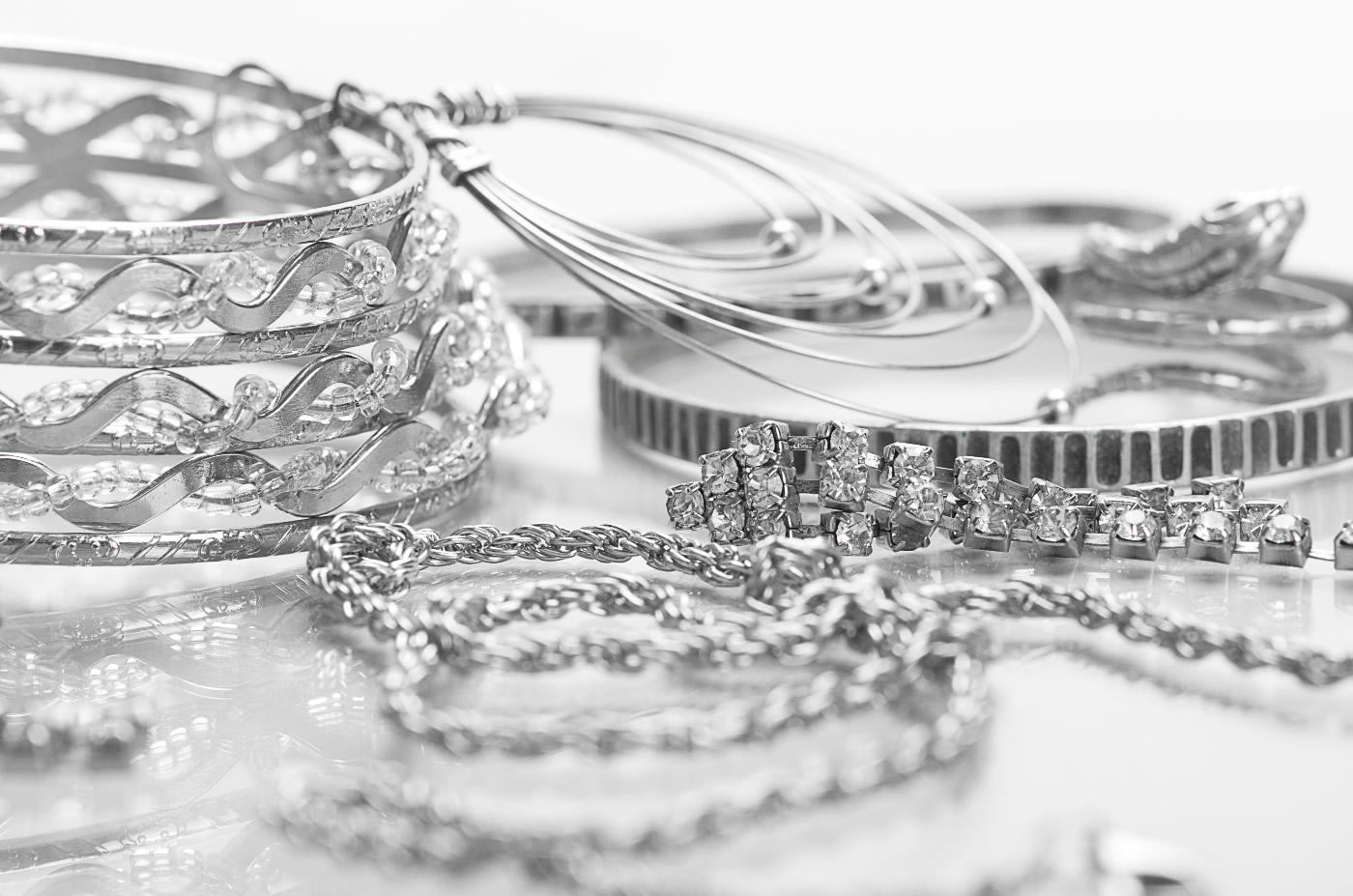
Sterling Silver is a type of Silver. Pure Silver's silver content is 99.9% with trace elements of .01%. But pure silver is very soft and will not hold its shape. For most common uses, silver needs to be hardened to make jewelry.Sterling Silver is 92.5% silver and 7.5% alloy. This 7.5% is usually made of copper or zinc.
From about 1840 to 1940 in the United States and Europe, sterling silver cutlery (US: 'flatware or silverware') became the standard for fine dining. During the Victorian period, etiquette dictated no food should be touched by hand. This Victorian sensibility carried over into the new century. A great number of silver companies emerged during that period. The peak of the silver craze was during the 50-year period from 1870 to 1920. Silverware settings during this period sometimes included up to 100 different pieces from forks and spoons to tea services and pitchers.
After World War II, with the dawn of the consumer society, fast food, and with both men and women in the labor force,the appetite for fine dining abated. With little time for meals and the cost of handmade pieces rising, only the wealthy could afford the large number of servants required for fancy dining and the constant cleaning silver requires.
Although silver is not very reactive, it is tarnished by exposure to airborne compounds of sulfur (byproducts of the burning of fossil fuels and some industrial processes) and to ozone. As the purity of the silver decreases, the problem of corrosion or tarnishing increases because other metals in the alloy, usually copper, may react with oxygen in the air.
STERLING SILVER - 925/1000 (92.5%) fine silver and 75/1000 (7.5%) copper.
COIN SILVER - 900/1000 (90%) fine silver and 100/1000 (10%) copper. This cannot be called sterling.
BRITANNIA SILVER - Must be at least 95.84% pure silver by weight.
MEXICAN SILVER - Usually contains 95% silver and 5% copper; more pure than sterling. (Not all silver produced in Mexico is Mexican Silver).
NICKEL AND/OR GERMAN SILVER - Neither contains any silver.
The use of silver in human culture has a long history, dating back 6,000 years to Mesopotamia, where workers were paid in silver or the equivalent weight of silver in grain. Other cultures, where gold was more prevalent, may have received some by trade, but dealt primarily in gold or copper as their currency, if they used a metals at all. China did not start mining silver until the 8th Century AD. However the Greeks and Romans had silver mines as early as the 6th Century BC. Silver's use in utensils, jewelery, and as coinage has been around for ages. More plentiful than gold, the value of silver has flucuated widely over time. Sometimes rising and sometimes crashing in value. The great silver market crash in 1980 was triggered by the Hunt Brothers' attempt to corner the silver market. Prices crashed from $50 per oz. to $10 per oz.